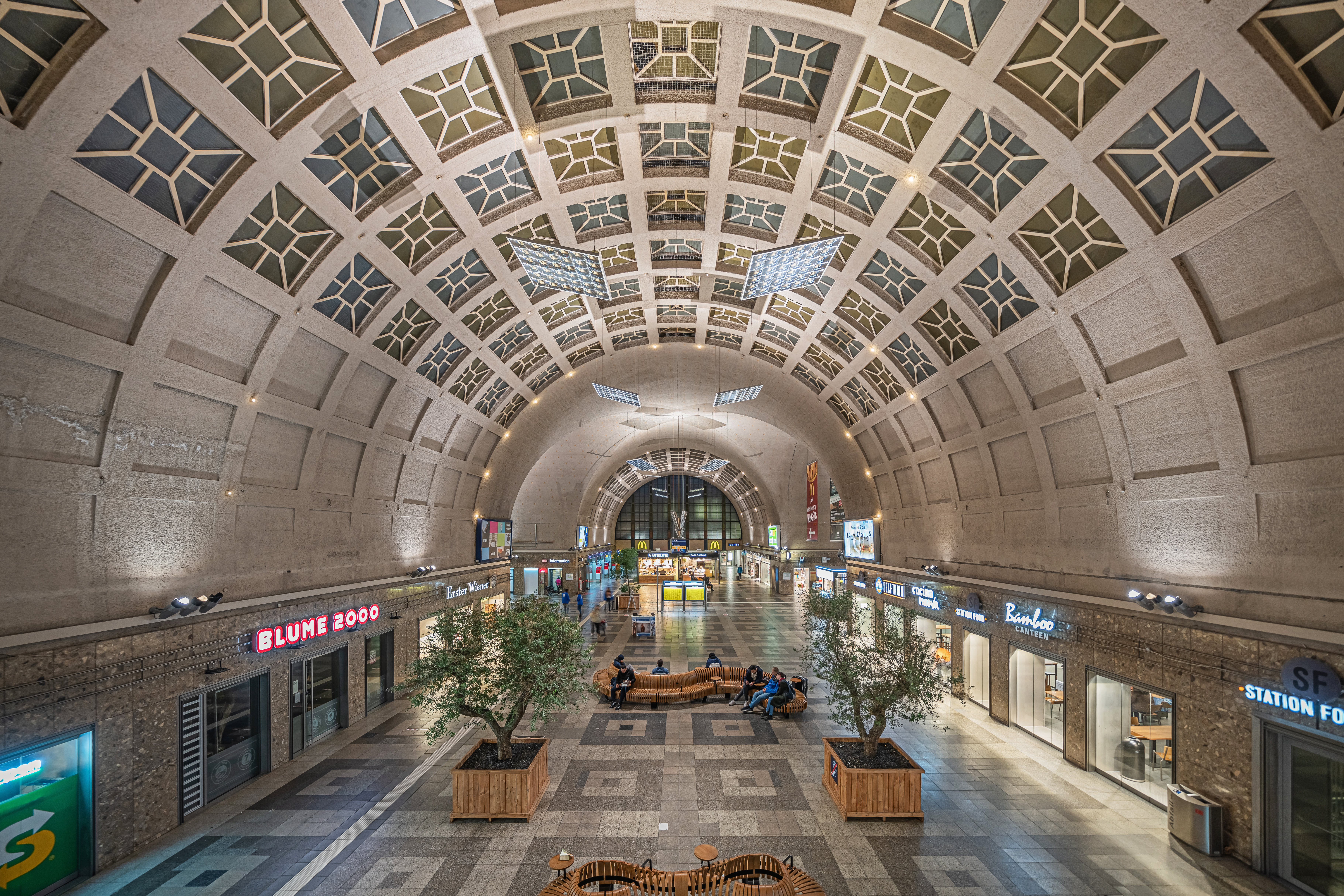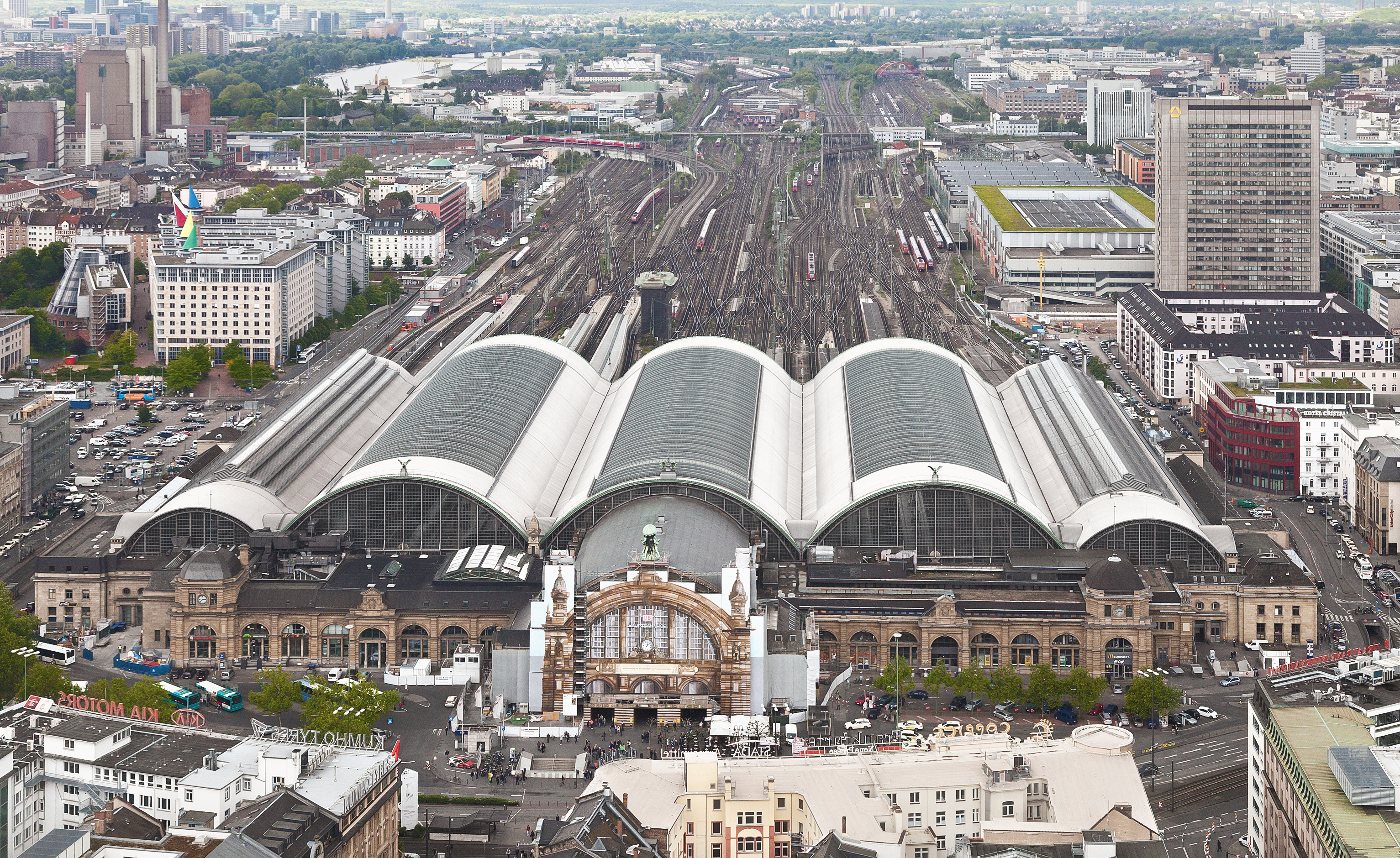|
Goldshöfe Station
Goldshöfe station is a station in the German state of Baden-Württemberg at the junction of the Goldshöfe–Crailsheim railway and the Stuttgart-Bad Cannstatt–Nördlingen railway. In addition to its function as a junction station it also serves the towns of Hüttlingen, Baden-Württemberg, Hüttlingen and Buch in the municipality of Rainau, both about two kilometres away. The station was named after the nearby farmhouse of Goldshöfe, which today is part of the Aalen district of Hofen. History The station was opened on 3 October 1863 with the line to Nördlingen was opened as part of the Rems Railway (''Remsbahn''). A connection to Crailsheim was being planned at that time and the station was designed from its beginning as a junction station. The line to Crailsheim (the Upper Jagst Railway) went into operation in 1866, which subsequently became the more important of the two lines, as part of the main line between Stuttgart and Nuremberg. Nevertheless, in 1972 the line to Nord ... [...More Info...] [...Related Items...] OR: [Wikipedia] [Google] [Baidu] |
Aalen
Aalen (; Swabian German, Swabian: ''Oole'') is a town located in the eastern part of the German state of Baden-Württemberg, about east of Stuttgart and north of Ulm. It is the seat of the Ostalbkreis district and is its largest town. It is also the largest town in the Ostwürttemberg region. Since 1956, Aalen has had the status of Große Kreisstadt (major district town). It is noted for its many half-timbered houses constructed from the 16th century through the 18th century. With an area of 146.63 km2, Aalen is ranked 7th in Baden-Württemberg and 2nd within the Stuttgart (region), Government Region of Stuttgart, after Stuttgart. With a population of about 66,000, Aalen is the 15th most-populated settlement in Baden-Württemberg. Geography Situation Aalen is situated on the upper reaches of the river Kocher, at the foot of the Swabian Jura which lies to the south and south-east, and close to the hilly landscapes of the Ellwangen Hills to the north and the ''Wel ... [...More Info...] [...Related Items...] OR: [Wikipedia] [Google] [Baidu] |
Munich
Munich is the capital and most populous city of Bavaria, Germany. As of 30 November 2024, its population was 1,604,384, making it the third-largest city in Germany after Berlin and Hamburg. Munich is the largest city in Germany that is not a state of its own. It ranks as the 11th-largest city in the European Union. The metropolitan area has around 3 million inhabitants, and the broader Munich Metropolitan Region is home to about 6.2 million people. It is the List of EU metropolitan regions by GDP#2021 ranking of top four German metropolitan regions, third largest metropolitan region by GDP in the European Union. Munich is located on the river Isar north of the Alps. It is the seat of the Upper Bavaria, Upper Bavarian administrative region. With 4,500 people per km2, Munich is Germany's most densely populated municipality. It is also the second-largest city in the Bavarian language, Bavarian dialect area after Vienna. The first record of Munich dates to 1158. The city ha ... [...More Info...] [...Related Items...] OR: [Wikipedia] [Google] [Baidu] |
Nürnberg Hauptbahnhof
(German for Nuremberg Central Station)''The train to the plane'' at www.lufthansa.com. Accessed on 7 Oct 2013 at www.dbmuseum.de. Accessed on 7 Oct 2013 is the main railway station serving the city of in . It is the largest station in and belongs to the 20 statio ... [...More Info...] [...Related Items...] OR: [Wikipedia] [Google] [Baidu] |
Karlsruhe Hauptbahnhof
Karlsruhe Hauptbahnhof is a railway station in the German city of Karlsruhe. The station is classified as a Category 1 station, as it is a major hub where several railways connect. History Old station When the Baden Mainline was built between Mannheim and Basel, the original Karlsruhe station was built on Kriegsstraße between Ettlinger Tor and Mendelssohnplatz about 500 metres south of Karlsruher Marktplatz, the central square of Karlsruhe. The station was designed by Friedrich Eisenlohr and it was opened on 1 April 1843 with two platforms. From the beginning, it was designed as a through station. South of the station there was a locomotive depot and to its east there was a freight yard and a central workshop. It was built to Irish gauge (), as were all railways built by the Grand Duchy of Baden State Railway in the early days. It was converted to standard gauge in 1855. In the following years other routes were connected to Karlsruhe station: in 1859 the line to Stuttga ... [...More Info...] [...Related Items...] OR: [Wikipedia] [Google] [Baidu] |
Intercity (Deutsche Bahn)
Intercity, often shortened to IC (), is the second-highest Train categories in Europe, train classification in Germany, after the Intercity Express (ICE). Inter-city rail, Intercity services are locomotive-hauled express train, express trains, usually over long-distances. There are Intercity routes throughout Germany and routes generally operate every other hour, with multiple routes giving a more frequent service on core routes. Intercity services are operated by the DB Fernverkehr division of Deutsche Bahn, Germany’s national railway. The ''Intercity'' name was introduced in Germany in 1971, replacing the F-Zug category, and was the top category of train in Germany until the introduction of the high-speed ICE services in the early 1990s. With the proliferation of ICE services, the role of IC trains has diminished slightly. Nonetheless, Intercity trains still offer a high standard of average speed and comfort; all routes offer First class travel, first class coaches, and most ... [...More Info...] [...Related Items...] OR: [Wikipedia] [Google] [Baidu] |
Donauwörth Station
Donauwörth station is a railway station in southern Germany. It is located south-west of the city of Donauwörth in Bavaria. The station is at the intersection of the Augsburg–Nördlingen railway, Augsburg–Nördlingen, the Donauwörth–Treuchtlingen railway, Donauwörth–Treuchtlingen and the Ingolstadt–Neuoffingen railways. History The first train ran to Donauwörth in 1847. The station was located at that time in an area now occupied by a street called ''Promenade'', one kilometre closer to the city centre than the present station. In 1861, a railway siding was built from this station to serve steam shipping on the Danube in the area of the modern ''Zirgesheimer Straße''. The station was located directly next to a former 125 metre long railway tunnel. The tunnel is now usable by pedestrians and cyclists. During the Second World War, it was used for the manufacture of war munitions. The railway from Neuoffingen to Regensburg was opened in 1877. This crossed the exi ... [...More Info...] [...Related Items...] OR: [Wikipedia] [Google] [Baidu] |
Aalen Station
Aalen Hauptbahnhof is a junction on the Stuttgart-Bad Cannstatt–Nördlingen railway from Stuttgart to and the Aalen–Ulm railway from Ulm. The station is located 200 metres northeast of the historic old town (Altstadt) of Aalen in the German state of Baden-Württemberg. It is classified by Deutsche Bahn as a category 3 station. Aalen station was renamed a ''Hauptbahnhof'' (main station) at the timetable change on 11 December 2016. History Despite disagreements between the countries of Württemberg and Bavaria, which did not have a common concept of a cross-border railway, the Rems Railway () was opened by the Royal Württemberg State Railways The Royal Württemberg State Railways (''Königlich Württembergische Staats-Eisenbahnen'' or ''K.W.St.E.'') were the state railways of the Kingdom of Württemberg (from 1918 the ''People's State of Württemberg'') between 1843 and 1920. Early ... on 18 July 1861. Aalen was not planned as a railway junction and the station ... [...More Info...] [...Related Items...] OR: [Wikipedia] [Google] [Baidu] |
German Railway Station Categories
The approximately 5,400 railway stations in Germany that are owned and operated by the subsidiary DB InfraGO are divided into seven categories, denoting the service level available at the station. This categorisation influences the amount of money railway companies need to pay to DB Station&Service for using the facilities at the stations. Categories Category 1 The 21 stations in Category 1 are considered traffic hubs. They are permanently staffed and carry all sorts of railway-related facilities, as well as usually featuring a shopping mall in the station. Many are the main station ( or ''Hbf'') of larger cities. However, some are located in smaller cities, such as Karlsruhe Hauptbahnhof, and are regarded as important because they are at the junction of important railway lines. Berlin, Hamburg, Munich and Cologne, the four biggest cities in Germany, have more than one Category 1 station. Included in this category are the following stations: *Berlin-Gesundbrunnen stati ... [...More Info...] [...Related Items...] OR: [Wikipedia] [Google] [Baidu] |
Bahnhof Goldshoefe Gleishinweis
Bahnhof (German for "railway station") is a Swedish Internet service provider (ISP) founded in 1994 by Oscar Swartz in Uppsala, Sweden, and is the country's first independent ISP. Today the company is represented in Stockholm, Gothenburg, Uppsala, Borlänge, Malmö and Umeå. The company is listed on Nasdaq First North. WikiLeaks used to be hosted in a Bahnhof data center inside the ultra-secure bunker Pionen, which is buried inside the White Mountains in Stockholm. History Bahnhof was founded in 1994 by Oscar Swartz. It was one of Sweden's first ISPs. The company is publicly traded since December 2007 under the name BAHN-B (Aktietorget). On 11 September 2008, Bahnhof opened a new computer center inside the former civil defence center Pionen in the White Mountains in Stockholm, Sweden. After WikiLeaks was kicked off of Amazon Web Services in December 2010 after the Afghan War documents leak, it bought server space from Bahnhof, as its chairman Jon Karlung said in press interv ... [...More Info...] [...Related Items...] OR: [Wikipedia] [Google] [Baidu] |
1972 Summer Olympics
The 1972 Summer Olympics (), officially known as the Games of the XX Olympiad () and officially branded as Munich 1972 (; ), were an international multi-sport event held in Munich, West Germany, from 26 August to 11 September 1972. It was the second Summer Olympics to be held in Germany, after the 1936 Summer Olympics, 1936 Games in Berlin, which had taken place under the Nazi Germany, Nazi rule. Germany became only the second country at that point after the United States to have two different cities host the Summer Olympics. The West German government had been eager to have the Munich Olympics present a Democracy, democratic and optimistic Germany to the world, as shown by the Games' official motto, ''"Die Heiteren Spiele"'', or "the cheerful Games". The logo of the Games was a blue solar logo (the "Bright Sun") by Otl Aicher, the designer and director of the visual conception commission. The hostesses wore sky-blue dirndls as a promotion of Bavarian cultural heritage. The Oly ... [...More Info...] [...Related Items...] OR: [Wikipedia] [Google] [Baidu] |
Nuremberg
Nuremberg (, ; ; in the local East Franconian dialect: ''Nämberch'' ) is the Franconia#Towns and cities, largest city in Franconia, the List of cities in Bavaria by population, second-largest city in the States of Germany, German state of Bavaria, and its 544,414 (2023) inhabitants make it the List of cities in Germany by population, 14th-largest city in Germany. Nuremberg sits on the Pegnitz (river), Pegnitz, which carries the name Regnitz from its confluence with the Rednitz in Fürth onwards (), and on the Rhine–Main–Danube Canal, that connects the North Sea to the Black Sea. Lying in the Bavarian Regierungsbezirk, administrative region of Middle Franconia, it is the largest city and unofficial capital of the entire cultural region of Franconia. The city is surrounded on three sides by the , a large forest, and in the north lies (''garlic land''), an extensive vegetable growing area and cultural landscape. The city forms a continuous conurbation with the neighbouring ... [...More Info...] [...Related Items...] OR: [Wikipedia] [Google] [Baidu] |






